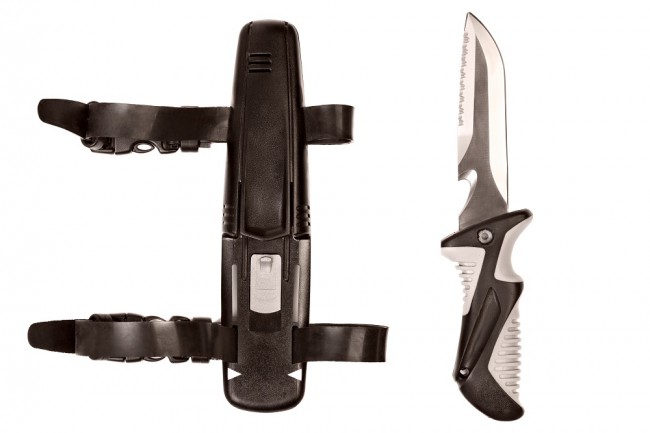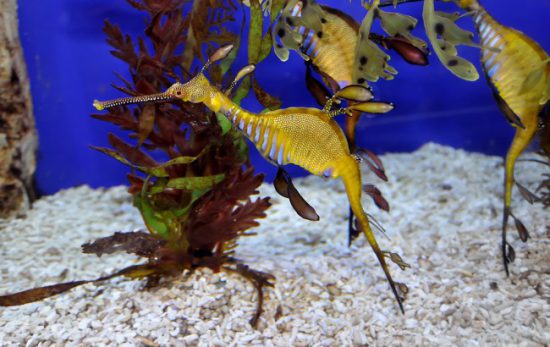Have you ever had to fend off a school of angry sharks? No? We haven’t either, and as divers, we already know how precious the underwater ecosystem is we’d never want to harm the sea creatures we encounter.
Dive knives and cutting devices are not meant to be used as weapons or defence mechanisms. These sharp devices are tools that help you make the most out of each dive and ensure your safety. It’s extremely smart to carry one just in case you get caught in a fishing line, net, seaweed or something else that could prove troublesome.
While most recreational divers who dive in groups most likely won’t need a knife, divers who frequently visit wrecks or perform technical dives will certainly want a quality knife in their kit. Just make sure the knife is readily available in a sheath and strapped on your arm, leg, dive belt or BCD so you can reach it easily if and when it’s needed.

Consider these features when looking for the right dive knife for your kit:
- Material – Stainless steel knives are strong but need to be rinsed after each use to prevent rusting. Titanium is another option that is almost completely rustproof, holds a sharp edge and is corrosion resistant; however for these reasons, it also comes with a higher price tag.
- Size – You really don’t need a large knife, and the more compact it is, the less bothersome it will be. Opt for either a small 2-3-inch blade which will be easy to fit to your kit and lightweight to travel with – or a medium 4-5-inch blade which can prove the most practical option for cutting thicker lines. Whichever you choose, just be sure that you can get a firm grasp on the handle even if you’re wearing thicker gloves.
- Attachment – a sheath fixture can help mount the knife on your equipment such as on the BCD or SPG, or even your leg or wrist.
- Shape – Look for a knife that has both a straight and a serrated edge that will cut through both plastic and natural fibres. You will also have to consider the type of tip that will work best – a blunt tip is the safer option, as it will prevent you from making accidental punctures in hoses or exposure suits. Shears, as opposed to a knife, are more scissor-like and can quicker for cutting line. Consider getting a knife and shears if you plan to dive in areas known for discarded fishing nets.

A good cutting device is an essential part of your pack, but you may discover that what works well for someone else doesn’t work for the type of diving you do.
Visit your local PADI Dive Shop for help finding the perfect tool for you.


